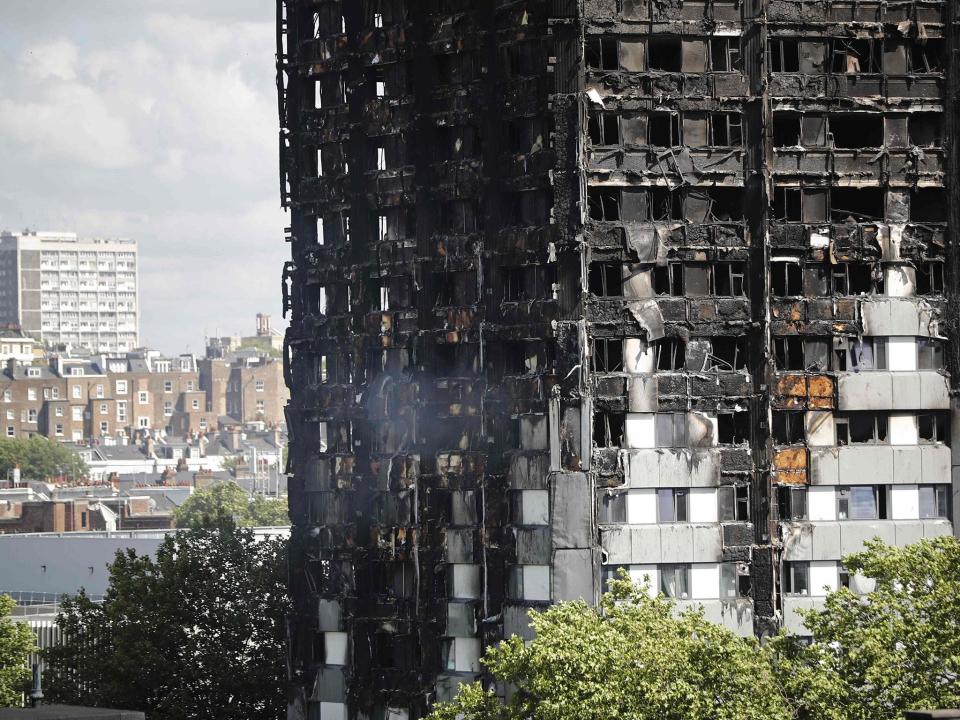Grenfell fire: Number of tower blocks discovered with similar cladding rises to seven – and is expected to rise

The number of tower blocks found to have combustible cladding similar to Grenfell Tower has risen to seven – and is set to rise further.
Fire and rescue services are carrying out urgent checks to determine if the seven blocks are definitely unsafe and whether hundreds of residents need to be moved out.
Samples from 600 high-rise flats are being tested to determine just how many thousands of people are living in potential death traps.
The cladding is believed to have been responsible for the rapid spread of the fire at Grenfell Tower, in which at least 79 people are thought to have died.
Seven tower blocks in four different local authorities failed emergency tests, Downing Street said, but they have not yet been identified.
"Failing this test does not necessarily mean that your building may be declared unsafe," Theresa May's deputy spokeswoman said.
"It will be subject to further testing that is undertaken by the fire services to do that and, if that is the case, then we will be obviously working with local authorities and the landlords to make sure that nobody stays in a building that's proved to be unsafe."
Sajid Javid, the Local Government Secretary, is expected to provide an update later today of how many of the 600 tower blocks under suspicion have failed the fire-retardant tests.
It is possible that some buildings could be deemed habitable even with combustible cladding, if they have barriers to prevent fires spreading quickly, for example, or if the cladding only covers some of the block.
It is not clear how many of the 600 have been tested so far. Local authorities were only urged to send in samples on Monday – five days after the Grenfell tragedy.
And not all have the blocks under suspicion have the aluminium composite material (ACM) panels attached to Grenfell Tower, with disastrous consequences.
Camden Council, in London, has said it is removing cladding from five tower blocks, but those five – or not all of them – are not thought to be included in the Government figure.
The four local authorities will only be named after they have reported that they have informed residents first.
The Building Research Establishment, in North London, has the ability to test 100 samples a day, with results produced “within hours”.
It is not known how long the Fire Service will take to carry out the further tests, to determine whether buildings are unsafe.
The No 10 spokeswoman was unable to say whether having combustible cladding on high rise towers was illegal in every case, because it depended on individual circumstances such as height or environmental factors.
Local authorities have been urged to send samples of cladding in “very quickly”, she said, adding: “Many of them are coming in as we speak.”
“This is a matter of urgent priority for everybody so there will not be delays in the checks being carried out and residents being informed.”

 Yahoo News
Yahoo News 